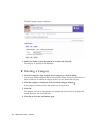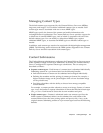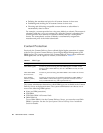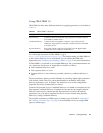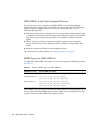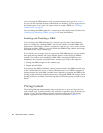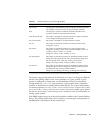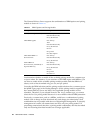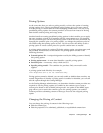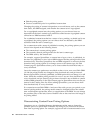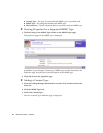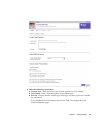
26 Administrator Guide • 2005Q4
You can assign the DRM options to the associated content types given in TABLE 2-5
but you are not restricted to those combinations, for instance, you can apply None to
all content types if you wish. For steps on how to assign a DRM, see
“Adding a
Content Type” on page 32.
You can change the DRM option for a content type after deployment if needed. See
“Enabling and Disabling a DRM” on page 26 for more information.
Enabling and Disabling a DRM
You can change the DRM selection for a content type after the Content Delivery
Server is running by switching DRMs. You can also enable or disable DRMs after
deployment. For example, if None is assigned to content type, image, and you later
choose to use OMA DRM 1.0, you can enable that DRM during runtime and assign
that DRM to the image content type.
If you decide you no longer want to support the CDS DRM Agent, you can disable
that agent during runtime and assign another option, such as None to MIDlets
content. Use caution when disabling a DRM. Make sure that the DRM you are
disabling is not currently associated with a content type. Follow this sequence:
1. Change the DRM assigned to the content type.
2. Disable the old DRM.
Even though the DRM is disabled, content protected under that DRM can still exist
in the Content Delivery Server. Content submitted after a new DRM is assigned is
protected under the new DRM. Another factor affected by changing the DRM is the
pricing model associated with the content type. Changing DRMs can change which
pricing models are available. The following section discusses pricing content in more
detail.
Pricing Content
The Catalog Manager administrator must associate one or more pricing models for
each content type. A pricing model is the condition of purchase (per download, per
periods of uses, and per number of uses) associated with content. The pricing
models supported in the Content Delivery Server are defined in
TABLE 2-10.



